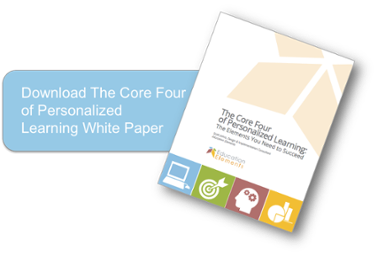In the year 1762, a Genevan philosopher named Jean-Jacques Rousseau presented the world with his vision of education. Despite being burned, banned, and ridiculed, this vision – a book Rousseau titled Emile, or On Education, went on to become a pillar of today’s modern philosophies on teaching and learning. The scope of Emile is vast, and it foretold of many developments that were yet to be realized.
Among these developments? The notion of personalized learning, such that an education is tailored to the experiences and needs of the individual learner. Rousseau believed that humans have a natural inclination to learn, and that curiosity and exploration provide innate rewards that in turn motivate further learning. In his book, the title character, Emile, explores the world alongside his tutor. Emile is encouraged to learn at his own pace according to his own development, with the tutor serving as a guide. Throughout, the tutor takes a “naturalistic” approach to Emile’s education, providing a well-structured environment that is suited to Emile’s particular strengths, weaknesses, and developmental needs.
Clearly, the idea of personalized learning is not a new one. In fact, several other foundational approaches have followed a similar philosophy, ranging from Maria Montessori’s self-teaching approaches to the Reggio Emilia schools with a project-based model. So what makes today’s personalized learning movement different?
The answer is at once simple and complicated: technology. The fundamental flaw of Emile is that Rousseau’s model requires 1-to-1 tutoring; an expensive and unfeasible proposition for districts catering to thousands of students. However, we are beginning to see how our rapidly emerging developments in technology can afford students with some of the deeply differentiated learning opportunities that previously could only be addressed in small group settings.
Some of these technologies can already be found in classrooms. Some are adaptive digital learning platforms provide content and problem sets that adjust to students’ varying levels of mastery. Many of these emerging technologies, such as Education Element’s Highlight, also provide data analytics that can be used by both teachers and students to identify and address gaps in learning. Other technologies, such as Quizlet, capitalize on user-generated content, so that students can build study tools that are tailored to what they are working on at any given moment. The explosion in freely available content has also opened doors for learners to deeply engage in subject areas that interest them. Some of these content providers also provide suggested learning roadmaps, tied to reward systems and data reporting. Still other technologies connect humans with other humans – Skooli and Chegg, for example, provide a conduit for students to work online with experts in a wide range of fields.
Some critics have suggested that personalized learning is a fad, but all indicators are that it is likely not going away anytime soon. Facebook CEO Mark Zuckerberg recently announced a commitment to investing significant funds into personalized learning software, and others are following suit. Marvelous new projects have already begun to advance personalized learning even further. We are seeing developments in artificial intelligence, such that students in the near future may be able to “text a tutor” who is in fact not a tutor at all, but an algorithmically complex piece of software who can promote learning in remarkably human ways. As creators of serious games and simulations, we have also seen that this is another promising route to personalization. In our Martha Madison game-based learning curriculum, for example, students receive content support tailored to their levels of content mastery (in fact, many have argued that video games are some of the world’s best examples of personalized learning!). Developments in augmented reality, virtual reality, and the Internet of Things will also likely play a role in tomorrow’s personalized learning. Just think: if students today are already virtually traveling the world through Google Cardboard, how will they be traveling five years from now? The possibilities are both rich and exciting.
Of course, as with any movement in education, it will be necessary to find a balance between many complex elements. School leaders will need to determine how to protect the vast amount of student data generated by new personalized ed tech. Educators will need to shift the mindset toward a student-focused perspective, and then figure out which technologies are best suited for that shift. Software developers will need to keep tabs on all of this, while continuing to innovate. With thoughtful design and application, however, digital personalized learning will not only transform education, but realize a vision over 250 years in the making.

- Second Avenue Learning Staff Brian Regan
Second Avenue learning is a leader in the design and development of serious games for education. Products include Voters Ed - helping students understand our presidential election process, and Martha Madison a physical science suite of games for serious STEM learning. Second Avenue Learning - Reimagine Learning




